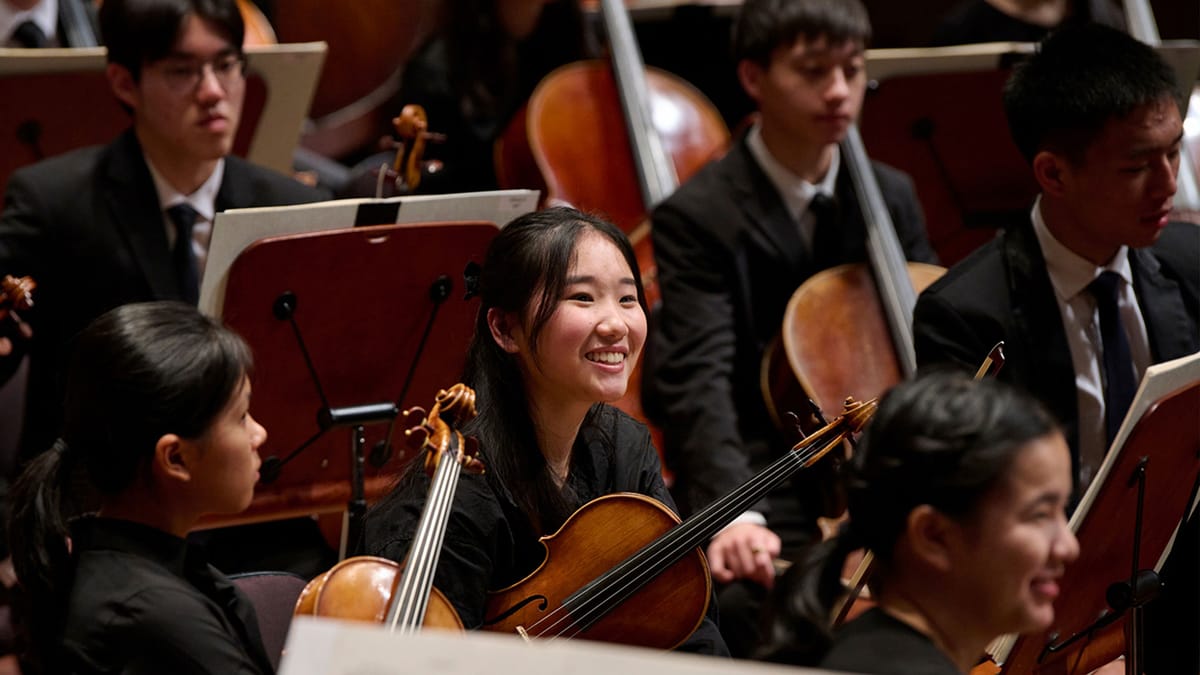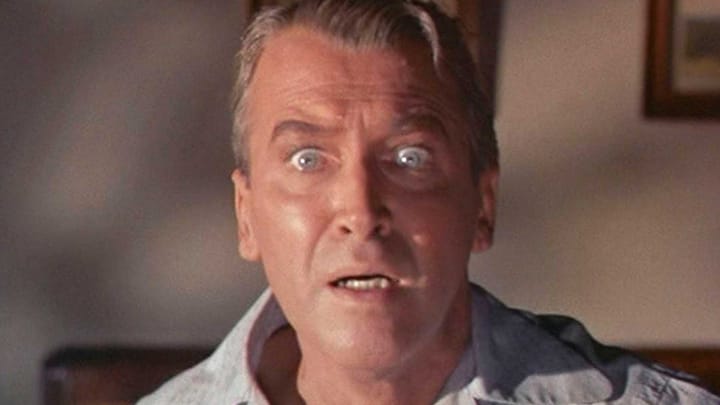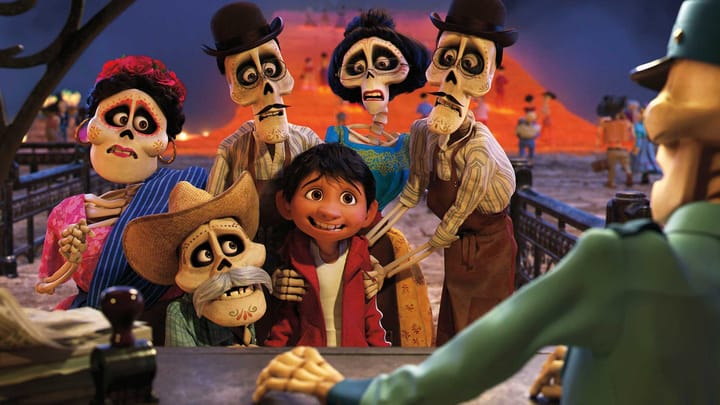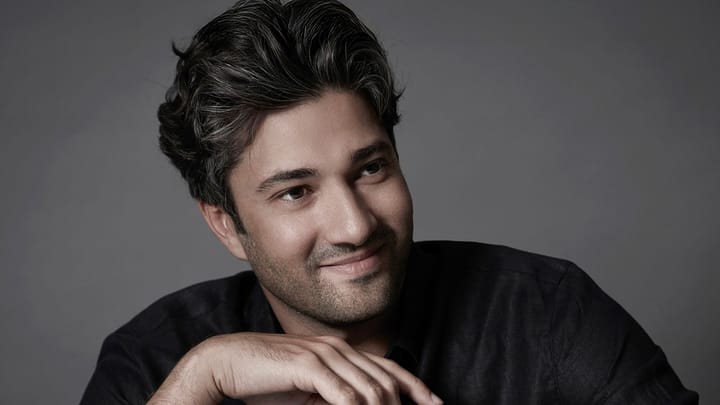In This Program
The Concert
Sunday, May 18, 2025, at 2:00pm
Radu Paponiu conducting
Wattis Foundation Music Director
San Francisco Symphony Youth Orchestra
Anna Clyne
This Midnight Hour (2015)
Samuel Coleridge-Taylor
Petite Suite de concert, Opus 77 (ca. 1911)
La caprice de Nanette (Nanette’s Caprice)
Demande et réponse (Question and Answer)
Un sonnet d’amour (A Love Sonnet)
La tarantelle frétillante (The Wriggling Tarantella)
Intermission
Hector Berlioz
Symphonie fantastique, Opus 14 (1830)
Reveries, Passions
A Ball
Scene in the Fields
March to the Scaffold
Dream of a Witches’ Sabbath
This concert is generously supported by the Ralph I. Dorfman Commissioning Fund.
This concert is presented in honor of the Pierre Monteux Society—a dedicated community of San Francisco Symphony supporters whose long-term giving commitments help secure the future of the Symphony for generations to come.
The Youth Orchestra concerts are supported by

Additional sponsorship for the Youth Orchestra concerts is provided by the Hearst Foundations, National Endowment for the Arts, and Alexander M. & June L. Maisin Foundation.
Program Notes
This Midnight Hour
Anna Clyne
Born: 1980, in London
Work Composed: 2015
Instrumentation: 2 flutes, piccolo, 2 oboes, 2 clarinets, 2 bassoons, 4 horns, 2 trumpets, 3 trombones, timpani, percussion (bass drum, vibraphone, crotales, tam-tam, and suspended cymbal), and strings
Duration: About 12 minutes
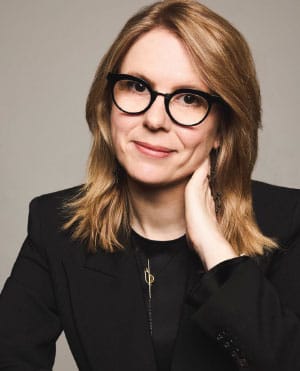
Anna Clyne is one of the most performed composers working today, with commissions and performances from institutions including Carnegie Hall, the Kennedy Center, Barbican, Philharmonie de Paris, Edinburgh International Festival, and Last Night of the Proms. Her music has been performed by the New York Philharmonic and London Philharmonic, among many other orchestras, and she has been a prolific composer in residence, with stints with the Helsinki Philharmonic, Symphony Orchestra of Castilla y León, Philharmonia Orchestra, Trondheim Symphony, Baltimore Symphony, Chicago Symphony, and Scottish Chamber Orchestra. Her collaborators span artforms and genres—including companies from LA Opera to San Francisco Ballet, and performers from Yo-Yo Ma to Björk.
Born in London, Clyne earned a bachelor of music degree with honors from Edinburgh University, where she studied with Marina Adamia, and then went on to receive a master of music from Manhattan School of Music, where she studied with Julia Wolfe. Clyne has been awarded the Hindemith Prize, a Charles Ives Fellowship from the American Academy of Arts and Letters, and in 2015 was nominated for a Grammy Award for best contemporary classical composition. About This Midnight Hour, she writes:
The opening to This Midnight Hour is inspired by the character and power of the lower strings of L’Orchestre national d’Île de France. From here, it draws inspiration from two poems—one by Charles Baudelaire (1821–67) and another by Juan Ramón Jiménez (1881–1958). Whilst it is not intended to depict a specific narrative, my intention is that it will evoke a visual journey for the listener.
The Jiménez poem is only three lines, reading in English:
Music:
a nude woman
running wildly through the pure night!
The Baudelaire poem begins:
Here comes the time when swaying on its stem
Every flower evaporates like a censer;
Sounds and perfumes turn in the evening air;
Melancholy waltz and languid vertigo!
—Benjamin Pesetsky
Petite Suite de concert, Opus 77
Samuel Coleridge-Taylor
Born: August 15, 1875, in London
Died: September 1, 1912, in London
Work Composed: ca. 1911
Instrumentation: 2 flutes, piccolo, 2 oboes, 2 clarinets, 2 bassoons, 4 horns, 2 trumpets, 3 trombones, timpani, percussion (triangle, cymbals, snare drum, bass drum, and glockenspiel), and strings
Duration: About 15 minutes
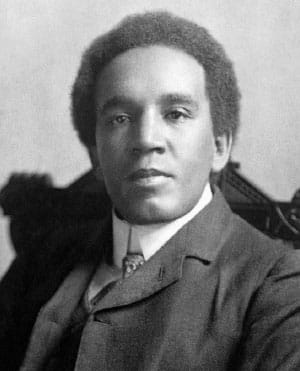
Samuel Coleridge-Taylor’s name is a play on that of the Romantic poet Samuel Taylor Coleridge, perhaps pointing to his mother’s artistic ambitions for her son. His father was Daniel Peter Hughes Taylor, a Sierra Leonean physician who studied in London but returned to West Africa before Samuel was born. His mother, Alice Hare Martin, was a white Englishwoman, and unmarried. It must not have been easy for Coleridge-Taylor to grow up in working-class Victorian London as a biracial child of illegitimate birth, but he was later adopted by his mother’s husband, received violin lessons, and earned a scholarship to the Royal College of Music in 1890.
By age 16, Coleridge-Taylor was already composing, and soon joined the studio of Charles Villiers Stanford, where his fellow students included Ralph Vaughan Williams and Gustav Holst. He won several prizes and obtained his first commission on the recommendation of Edward Elgar. He became interested in the United States and some of his best-known pieces, such as Hiawatha’s Wedding Feast (1898), were based on American themes. He visited the US three times, meeting President Theodore Roosevelt at the White House and touring with Harry Burleigh, the Black Pennsylvanian singer and composer who had worked with Antonín Dvořák in New York. For a moment around the turn of the 20th century, Coleridge-Taylor was one of England’s best-known composers, but he died unexpectedly from pneumonia at age 37, and his music, apart from Hiawatha, was rarely revived in the decades thereafter.
Coleridge-Taylor’s Petite Suite de concert is an example of “light music”—the middlebrow orchestral pops repertoire that flourished in England from the late Victorian period through World War II. Coleridge-Taylor turned to the genre, perhaps seeking greater financial success, after his “serious” follow-ups to the wildly successful Hiawatha’s Wedding Feast were cooly received. Written around 1911, but based on earlier sketches, the four-movement suite is meant for tuneful enjoyment. The movement titles are playful and typical of light music: “Nanette’s Caprice,” “Question and Answer,” “A Love Sonnet,” and “The Wriggling Tarantella.”
—B.P.
Symphonie fantastique, Opus 14
Hector Berlioz
Born: December 11, 1803, in La Côte-Saint-André, France
Died: March 8, 1869, in Paris
Work Composed: 1830
Instrumentation: 2 flutes, piccolo, 2 oboes (2nd doubling English horn), 2 clarinets (2nd doubling E-flat clarinet), 4 bassoons, 4 horns, 4 trumpets, 3 trombones, tuba, timpani, percussion (bass drum, bells, cymbals, field drum, and snare drum), 2 harps, and strings
Duration: About 52 minutes
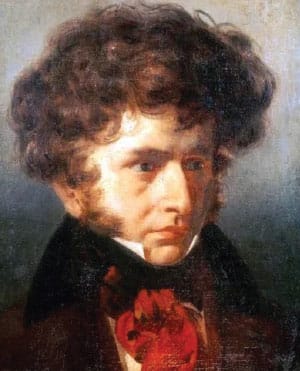
Berlioz strove to write “new music.” He succeeded. The Fantastique, that most amazing of first symphonies, sounds and behaves like nothing ever heard before.
On September 11, 1827, Berlioz went to the Paris Odeon for a performance of Hamlet by a company from London. The younger female roles were taken by Harriet Smithson, a 27‑year‑old actress who had been brought up in Ireland. Berlioz fell instantly and wildly in love with her. He spoke next to no English, and the violent effect upon him of that evening’s performance was a combination of verbal music, his vivid recollection of the play from his reading of it in translation, and, as far as Ophelia was concerned, sheer Eros. He wrote to Smithson repeatedly, but they did not meet. He heard gossip about an affair between her and her manager. This hurt, but it also provided enough distance to enable him to plan and begin work on the symphony whose design he described in detail to his friend the poet Humbert Ferrand.
In brief, “an artist, gifted with a vivid imagination, [falls in love with] a woman who embodies the ideal of beauty and fascination that he has long been seeking. . . . In a fit of despair, he poisons himself with opium, but the narcotic, instead of killing him, induces a horrible vision” in which he believes that, having killed his beloved, he is condemned to death and witnesses his own execution. After death, he “sees himself surrounded by a foul assembly of sorcerers and devils. . . . [His beloved] is now only a prostitute, fit to take part in such an orgy.”
The premiere of the Fantastique took place in the winter of 1830. Two years later, Berlioz introduced a revision, much sharpened and improved. He moved heaven and earth to get Harriet to his concert on December 9, 1832, though it seems that she went without at first realizing the nature of the event or even the identity of the composer.
The day after the Fantastique’s second premiere, Berlioz and Smithson finally met. Before long she had said the fatal words, “Berlioz, je t’aime,” and on October 3, 1833, they were married. Her French was roughly like his English. It was all a disaster. They separated in the summer of 1844 and should have done so much sooner. Her career was long since over, and she died in 1854, suffering from alcoholism and paralysis. Berlioz supported her until the end.
Passions and Visions
Berlioz wrote several programs for this autobiographical symphony. What follows is the note Berlioz published with the score in 1845 and described as “indispensable for a complete understanding of the dramatic outline of the work.”
Part One: Reveries, Passions—The author imagines that a young musician, afflicted with that moral disease that a celebrated writer calls “the surge of passions,” sees for the first time a woman who embodies all the charms of the ideal being of whom he has dreamed, and he falls hopelessly in love with her. Through a bizarre trick of fancy, the beloved image always appears in the mind’s eye of the artist linked to a musical thought whose character, passionate but also noble and reticent, he finds similar to the one he attributes to his beloved.
The melodic image and its human model pursue him incessantly like a double idée fixe. This is the reason for the constant appearance, in every movement of the symphony, of the melody that begins the first allegro. . . .
Part Two: A Ball—The artist finds himself in the most varied situations—in the midst of THE TUMULT OF A FESTIVITY, in the peaceful contemplation of the beauties of nature; but wherever he is, in the city, in the country, the beloved image appears before him and troubles his soul.
Part Three: Scene in the Fields—Finding himself in the country at evening, he hears in the distance two shepherds piping a ranz des vaches in dialogue. This pastoral duet, the scenery, the quiet rustling of the trees gently disturbed by the wind, certain hopes he has recently found reason to entertain—all these come together in giving his heart an unaccustomed calm, and in giving a brighter color to his ideas. He reflects upon his isolation; he hopes that soon he will no longer be alone. . . . But what if she were deceiving him! . . .This mixture of hope and fear, these ideas of happiness disturbed by black presentiments, form the subject of the ADAGIO. . . .
Part Four: March to the Scaffold—Having become certain that his love goes unrecognized, the artist poisons himself with opium. The dose of the narcotic, too weak to kill him, plunges him into a sleep accompanied by the most horrible visions. He dreams that he has killed the woman he had loved, that he is condemned, led to the scaffold, and that he is witnessing HIS OWN EXECUTION. The procession moves forward to the sounds of a march that is now somber and fierce, now brilliant and solemn, in which the muffled noise of heavy steps gives way without mediation to the most noisy clangor. At the end of the march, the first four measures of the IDÉE FIXE reappear like a last thought of love interrupted by the fatal blow.
Part Five: Dream of a Witches’ Sabbath—He sees himself at the sabbath, in the midst of a frightful assembly of ghosts, sorcerers, monsters of every kind, all come together for his funeral. . . . The beloved melody appears again, but it has lost its character of nobility and reticence; now it is no more than the tune of an ignoble dance, trivial and grotesque: it is she, come to join the sabbath. . . . A roar of joy at her arrival. . . . She takes part in the devilish orgy. . . . Funeral knell, burlesque parody of the DIES IRAE, SABBATH ROUND-DANCE. The sabbath round and the Dies irae combined.
—Michael Steinberg
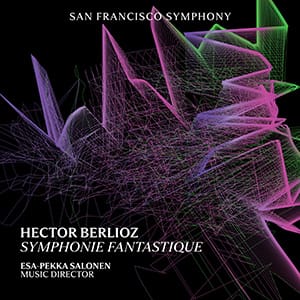
LISTEN AGAIN
Hear Esa-Pekka Salonen and the San Francisco Symphony’s recording of Symphonie fantastique (SFS Media, 2024) on Apple Music Classical and other major streaming services.
About the Artists
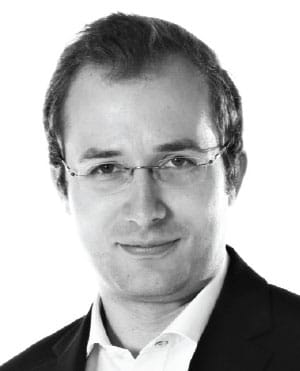
Radu Paponiu
Radu Paponiu was appointed Wattis Foundation Music Director of the San Francisco Symphony Youth Orchestra at the beginning of this season. He recently completed a five-year tenure as associate conductor of the Naples Philharmonic and a seven-year tenure as music director of the Naples Philharmonic Youth Orchestra. He has also served as music director of the Southwest Florida Symphony, assistant conductor of the Naples Philharmonic, and as a member of the conducting faculty of the Juilliard Pre-College.
As a guest conductor, Paponiu has appeared with the Romanian National Radio Symphony, Teatro Comunale di Bologna Orchestra, Transylvania State Philharmonic, Banatul Philharmonic, Louisiana Philharmonic, Rockford Symphony, Colorado Music Festival Orchestra, North Carolina Symphony, California Young Artists Symphony, and National Repertory Orchestra. He has collaborated with soloists such as Evgeny Kissin, Yefim Bronfman, Emanuel Ax, Gil Shaham, Midori, Vladimir Feltsman, Robert Levin, Charles Yang, Nancy Zhou, Stella Chen, and the Ébène Quartet.
Born in Romania, Paponiu began his musical studies on the violin at age seven, came to the United States at the invitation of the Perlman Music Program, and later completed two degrees in violin performance at the Colburn School. He went on to earn a master's degree in orchestral conducting at New England Conservatory, where he studied with Hugh Wolff.
San Francisco Symphony Youth Orchestra
The San Francisco Symphony Youth Orchestra is recognized internationally as one of the finest youth orchestras in the world. Founded by the San Francisco Symphony in 1981, the SFSYO’s musicians are chosen from more than 300 applicants in annual auditions. The SFSYO’s purpose is to provide an orchestral experience of preprofessional caliber, tuition-free, to talented young musicians. The more than 100 musicians, ranging in age from 12 to 21, represent communities from throughout the Bay Area. The SFSYO rehearses and performs at Davies Symphony Hall under the direction of Radu Paponiu, who joined the San Francisco Symphony as Wattis Foundation Music Director of the San Francisco Symphony Youth Orchestra in the 2024–25 season. Jahja Ling served as the SFSYO’s first Music Director, followed by David Milnes, Leif Bjaland, Alasdair Neale, Edwin Outwater, Benjamin Shwartz, Donato Cabrera, Christian Reif, and Daniel Stewart.
As part of the SFSYO’s innovative training program, musi-cians from the San Francisco Symphony coach the young play-ers each Saturday afternoon in sectional rehearsals, followed by full orchestra rehearsals with Radu Paponiu. Youth Orchestra members regularly meet and work with world-renowned artists: Esa-Pekka Salonen, Michael Tilson Thomas, Herbert Blomstedt, Kurt Masur, John Adams, Yo-Yo Ma, Valery Gergiev, Isaac Stern, Yehudi Menuhin, Wynton Marsalis, Midori, Joshua Bell, Mstislav Rostropovich, Simon Rattle, and many others have worked with the Youth Orchestra. Of equal importance, Youth Orchestra members are able to speak with these prominent musicians about their professional and personal experiences, and about music. The ensemble has toured Europe and Asia, given sold-out concerts in such legendary halls as Berlin’s Philharmonie, Vienna’s Musikverein, Saint Petersburg’s Mariinsky Theater, and Amsterdam’s Concertgebouw, and won first prize in Vienna’s International Youth and Music Festival.
Youth Orchestra Donors
The San Francisco Symphony gratefully acknowledges the following donors who have made a recent contribution of $500 or more to the San Francisco Symphony Youth Orchestra through December 29, 2024.
Vikrum Aiyer & Amber Parrish
Mrs. Laura Alster-Martin & Ms. Elaine Alster
Mr. Anthony Banks
Paul & Kathy Bissinger Oboe Chair in memory of William Bennett
Maggie & Less Chafen
Dr. & Mrs. Yanek S. Y. Chiu
Mr. Iain Cole
Vicki & David Fleishhacker
Elizabeth J. Folger
Teri Follett
Ms. Donalynne A. Fuller
Ms. Xinxin Guo
Mr. Jonathan Hayes
Randy Hensley & Allan Hurst
Hurlbut-Johnson Fund
Alan L.# & Carol M. Kaganov♪
Mr. Lee M. Baxter & Ms. Ursula Kaiser
Nicole C. Kelly
Lapporte-Frankel Family Philanthropic Fund of The Jewish Community Foundation
Ms. Jie Li
Mr. & Mrs. Sidney Liebes
Dr. C Lim
Mr. Stephan Loh
Sidne J. Long
Mr. Samuel Luckenbill
Alexander M. & June L. Maisin Foundation of the Jewish Community Federation & Endowment Fund
National Endowment for the Arts
The Bernard Osher Foundation
Mary Ann Peoples
Dr. Robert W. Popper
Mr. Jon Steinsson
Mr. & Mrs. Alex Wolf
Yee Family Trust honors Kum Mo Kim,
Violinist with the SF Symphony
Anonymous
♪Pierre Monteux Society Member
#Deceased
San Francisco Symphony Youth Orchestra
First Violins
Ian Cheung, Co-Concertmaster
Euisun Hong, Co-Concertmaster
Madison Lin, Co-Concertmaster
Xinyan Shi, Co-Concertmaster
Lawrence V. Metcalf Chair
Connor Chin
Hyesun Hong
Isaiah Iny-Woods
Ella Jeon
Spencer Kogoma
Constance Kuan
Andre Lu
Aaron Ma
Henry Miller
Lisa Saito
Jenna Son
Luke Spivey
Henry Stroud
Joy Wang
Second Violins
Valery Breshears, Co-Principal
Sydney Li-Jenkins, Co-Principal
Asher Cupp
Udo Funke
Christina Hong
Maximilian Huang
Kayla Hwang
William Liang
Veronica Qiu
Carolyn Ren
Yujin Shin
Kate Vo
Lucy Wang
Junnosuke Yanagisawa
Katherine Yoo
Andrew Zhang
Violas
Andrew Hwang, Co-Principal
Bryan Im, Co-Principal
Rebekah Sung, Co-Principal
Harper Berry
Jamie Cheung
Timothy Cheung
Ethan Han
Jaydon Li
Haoching Liu
Charlotte Elise Lopez
Olivia Park
Yufei Shen
Kenji Sor
Nicole Targosz
Katherine Yang
Cellos
Starla Breshears, Co-Principal
Huisun Hong, Co-Principal
Benjamin Jiang, Co-Principal
Melissa Lam, Co-Principal
Irei Fromme
Gabriel Irazabal
Claire Law
Kenneth Ma
Seoyeon Moon
Claire Topper
Keiya Wada
Cara Wang
Basses
Alec Blair, Co-Principal
Allison Prakalapakorn, Co-Principal
Raiden Tan, Co-Principal
Joshua Ahn
Shreyas Anand
Youmy Gonzalez
Haku Homma
Vera Kolodko
Jackson Pascual
Flutes
Sophia Bian
Diego Fernandez
Cadence Liu
Yuzuka Williams
Oboes
Gabriel Chodos
Nicholas Karr
Jesse Spain
Valerie Xu
Clarinets
Ryan Beiter
Subin Kim
Hanting Liu
Adam Thyr
Bassoons
Matthew Chan
Adam Erlebacher
Zach Noble
Aya Watanabe
Horns
Thomas Chang
Violet MacAvoy
Samay Sayala
Owen Sheridan
Nicholas Taylor
Trumpets
Kanon Homma
Logan Manildi
Brady Phan
Mason Rogers
Trombones
Mason Chambers
Thomas Valle
Lenel Gomintong, Bass Trombone
Tuba
Cameron Strahs
Timpani & Percussion
Leo Chun
Gabriela Garcia
Jeffrey Lee
Naoto Watanabe
Alexander Xie
Harp
Jessica Cheung
Camille Chu
Keyboard
Dylan Hall
Radu Paponiu,
Wattis Foundation Music Director
Coaching Faculty
David Chernyavsky, Violin
In Sun Jang, Violin
Chen Zhao, Violin
Adam Smyla, Viola
Jill Brindel, Cello
David Goldblatt, Cello
Stephen Tramontozzi, Bass
Catherine Payne, Flute
Russ de Luna, Oboe
Matthew Griffith, Clarinet
Jerome Simas, Clarinet
Justin Cummings, Bassoon
Jesse Clevenger, Horn
Jeff Biancalana, Trumpet
Christopher Bassett, Trombone & Tuba
Jacob Nissly, Percussion & Timpani
Marty Thenell, Percussion & Timpani
Katherine Siochi, Harp
Marc Shapiro, Keyboard
Youth Orchestra Administration
Ron Gallman, Director of Education and
Youth Orchestra
Daniel Hallett, Associate Director,
Youth Orchestra Program
Katie Lee, Youth Orchestra
Administrative Apprentice
Charlotte Elise Lopez, Youth Orchestra
Library Apprentice
Lily Wang, Youth Orchestra
Library Apprentice

